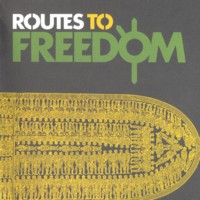
Routes to Freedom
The 'Routes to Freedom' season of events took place throughout Autumn 2007 at The Drum, an intercultural arts venue in Birmingham. The programme explored the struggle for social justice and equality in relation to African, Asian and Caribbean communities, and marked two key historical events and their impact: the bicentenary of the Abolition of the Slave Trade Act and the 60th anniversary of the partition of the Indian subcontinent. The programme was made up of theatre productions, touring exhibitions, film screenings, readings, dance performances and special events, including 'Coolies of the Caribbean' and a conference about Olaudah Equiano.
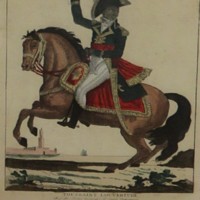
Freedom Think Tank
Freedom Think Tank was a time limited Black-led voluntary group established to influence the agendas of organisations in the North East commemorating the bicentenary of the abolition of the slave trade. The group also organised commemorative events, focusing on themes of promoting social solidarity and raising awareness of the participation of Black people in abolition.
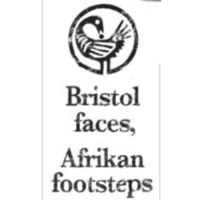
The Adisa Project: Bristol faces, Afrikan footsteps
The Adisa project gave a group of 20 young people of African and African Caribbean heritage the chance to investigate their roots both in Bristol and Africa. The group researched the history and legacies of Bristol's involvement in the trade in enslaved Africans, and its impact on one African country: Ghana. This was a community partnership project in collaboration with the Bread Youth Project, Full Circle Youth and Family and the Mill Youth Centre. The group opened their own exhibition, 'Afrikan Footsteps' at the City Museum and Art Gallery, after a two-week research trip to Ghana to learn about the country's history and culture. The exhibition included short films made by the participants; a Quotes Wall, taken from young people’s interviews with members of their local community; a wall of their personal heroes; a photographic exhibition of their trip; and 'Ma’afa Journey', a film recording their personal reactions to places visited in Ghana.
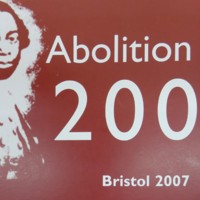
Abolition 200
Bristol was major trading port for the transatlantic slave trade in the 18th century. The city of Bristol marked the bicentenary of the Abolition Act with more than 100 events across the city - exhibitions, plays, debates, talks, concerts - under the umbrella organisation Abolition 200. In January 2007, city leaders signed a declaration of regret for the city's role in the trade. Over the weekend of 24-25 March, bells rang out across the city and a Service of Remembrance and Reconciliation was held at Bristol Cathedral, organised by a partnership of the Cathedral and the Council of Black Churches. 2007 was themed as the Year of Black Achievement, aiming to bring better provision of black heritage resources to schools in Bristol, with a particular focus on black attainment. Over 30 creative community projects were funded by Abolition 200 - including art installations, educational projects and community theatre - to reflect the themes of education, commemoration and legacy.
Featured here are some of the events from Abolition 200.
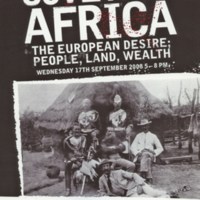
Coveting Africa. The European Desire: People, Land, Wealth
Bishop’s Stortford was the birthplace of the Victorian financier and imperialist Cecil Rhodes. To commemorate the bicentenary of the Abolition Act, Bishop's Stortford Museum and Rhodes Art Complex explored Britain’s imperial ambitions in the ‘Coveting Africa’ exhibition. The museum holds much material from Southern Africa, Zimbabwe, Zambia and Botswana: areas where British colonialism and imperialism in Africa was focused in the nineteenth century. Through a year-long programme of arts events, this project discussed the relationship between Britain and Africa, and explored British attitudes to African peoples. Events included workshops by the London School of Capoeira.
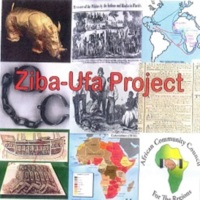
Ziba-Ufa
The phrase 'Ziba-Ufa' is Kiswahili for 'Closing the Gap'. Led by ACCR - the African Community Council for the Regions - this project aimed to close the gap between past and present by undertaking research from an African perspective. Blind Memory was a multimedia exhibition of images of Africa, slavery and resistance held at the Drum Arts Centre in Birmingham. The exhibition looked at memories relating to the transatlantic slave trade and how they affect beliefs and feelings; one of the aims of the exhibition was to rectify the amnesia and blind memory which many people are perceived to have in relation to slavery.
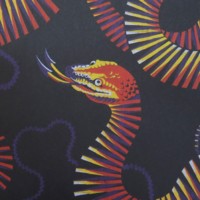
Into Africa
Into Africa was an exhibition held at the Dorman Museum in Middlesbrough, which examined the textile collaboration between Britain and West Africa after the abolition of the transatlantic slave trade. The exhibition focused on the textile samples of Christopher Dresser, the most prominent industrial product designer of the Victorian period. The samples were originally made for European markets, but increasingly became popular in West African textile trades in the late 19th century. The exhibition placed the samples in the context of African textile history, the Lancashire cotton trade and modern day exports.
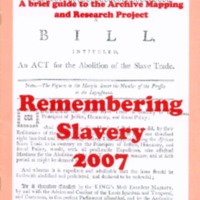
Remembering Slavery Archive and Mapping Project
Remembering Slavery 2007 involved museums, galleries and other cultural organisations across the North East of England in a programme of exhibitions, events, performances, lectures and activities to explore the themes of slavery and abolition, and identify connections with the region.
The Remembering Slavery Archive Mapping and Research Project, led by the Literary and Philosophical Society in Newcastle and assisted by local history groups, uncovered a large amount of archival material in the region’s institutions, exposing many hitherto unknown links between the North East and the slave trade. The participating record offices and libraries were Tyne and Wear Archives Service, the Literary and Philosophical Society Library, the Northumberland Record Office and the Robinson Library’s Special Collections at the University of Newcastle upon Tyne. This reassessment of the North East’s involvement in slavery and the slave trade led to new published research, including John Charlton's 'Hidden Chains: the Slavery Business and North East of England 1600-1865'. There was also a lecture programme at the Literary and Philosophical Society, including talks by Professor James Walvin. Several of the project volunteers published essays based on their research in 'North East History 39' (North East Labour History Society, 2008). The North East Slavery and Abolition Group was established among the project volunteers, and further work on slavery and abolition was included in the Society’s North East Popular Politics project (NEPPP), 2010-13. Much of the material found in the 2007 project has been loaded onto the NEPPP database.
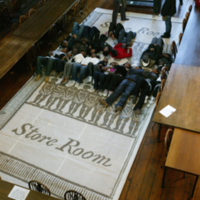
Changing Perspectives
Changing Perspectives was a community-based initiative based around the experiences of twenty-five African and Caribbean families from the North-East, to explore how their life in the UK contrasts with the lives of their ancestors. The project created a multimedia archive of cultural responses to celebrate the heritage of these families. This included oral testimonies, creative writing, photography, digital storytelling and art, emerging from a variety of community-led workshops. A series of workshops were held at Durham University Library, Archives and Special Collections (pictured), including a session aimed at children and young people, which focused on the experiences of children in the slave trade via extracts from the autobiography of Olaudah Equiano. Project outputs included a book, an interactive website, an exhibition of words and pictures of the community, an oral testimony collection, and series of documentary films. A key aim of the project was to promote community cohesion and develop cross cultural awareness and understanding.
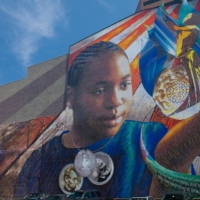
Lincoln Legacy
This large mural by Joshua Sarantitis, Lincoln Legacy, can be read from left to right, moving from Africa to America. The shape of Africa adorns the backdrop until the wooden boards of the slave ship transform into the American flag. Around the young child’s neck are three medallions: Abraham Lincoln’s face, Josiah Wedgwood’s abolitionist icon “Am I Not a Man and a Brother,” and Frederick Douglass' face. Made up of over 1 million glass mosaic tiles, it is the largest Venetian glass tile mural in Philadelphia at over 10,000 square feet. Located a block away from the Liberty Bell and Independence Mall, it is one of the few murals to be created in Philadelphia’s wealthier districts.
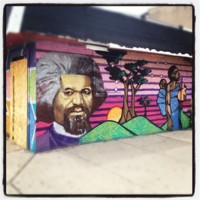
North Lawndale Mural
A teacher at North Lawndale College Preparatory Charter High School, Katie Bordner, created this mural with her students in 2012. It depicts the abolitionist Frederick Douglass, a mother and child and an African backdrop.
![Don Rodgers, Our Brothers and Sisters, 100th and Halsted Streets [Black Neighborhood], Chicago, 1984.jpg Don Rodgers, Our Brothers and Sisters, 100th and Halsted Streets [Black Neighborhood], Chicago, 1984.jpg](https://486312.frmmmguz.asia/files/square_thumbnails/ade8cb4554aca77fae33825bf55434dc.jpg)
Our Brothers and Sisters
Titled Our Brothers and Sisters, this mural depicts figures of black history, including the abolitionist Frederick Douglass and also Harold Washington, Martin Luther King Jr., Booker T. Washington, Malcolm X, W.E.B. Du Bois, and Louis Armstrong.
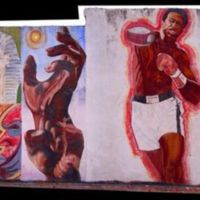
Wall of Respect
Borrowing its name from the 1967 “Wall of Respect” of Chiacgo, muralists Ashanti Johnson, Nathan Hoskins and Verna Parks installed their own public artwork in Atlanta. The abolitionist Frederick Douglass is alongside Martin Luther King Jr., Malcolm X and W.E.B. Du Bois, with the North Star between them. Angela Davis and Muhammad Ali are also present. The mural was destroyed in 2007.
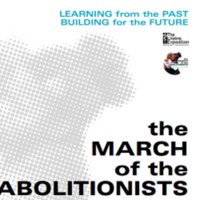
The March of the Abolitionists
The Lifeline Expedition began in 2000 as a reconciliation journey linking the European and African nations. The March of the Abolitionists was organised for 2007, aiming to bring an apology for the slave trade (especially the role of the church); to promote understanding of slavery and abolition by engaging with schools and the media; and to remember black and white abolitionists of the past, and of current campaigns. For the first stage in March 2007 (the Meridian Walk), a group of walkers included Africans and descendants of enslaved Africans, while white people from the former slave trading nations wore yokes and chains on their 250-mile journey from Hull to London. In the capital they joined the Walk of Witness at Westminster, led by the Archbishops of Canterbury and York. The second stage of the march (the Sankofa Walk) linked the former slave ports of London, Liverpool and Bristol in June and July 2007.
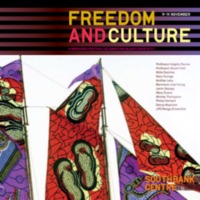
Freedom and Culture 2007
'Freedom and Culture' was a year-long nationwide programme to mark the bicentenary, conceived by Baroness Lola Young of Cultural Brokers (London) and Dr Nima Poowaya-Smith of Alchemy (based in Leeds). In partnership with artists, activists and cultural commentators, the programme explored the dimensions of oppression and freedom around the bicentenary, culminating in a weekend 'celebrating creativity and the African Diaspora' at the Southbank Centre in November 2007. One of several exhibitions that took place as part of the initiative was ‘Crossing the Waters’ at Cartwright Hall in Bradford, which took its central metaphor from the transatlantic slave trade. Almost all the works shown – from Sonia Boyce, Yinka Shonibare and others – were drawn from the permanent collections of Bradford Museums, Galleries and Heritage. The exhibition later toured to the City Gallery, Leicester in 2008.
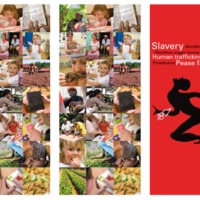
Slavery Here!
Slavery here! was a project hosted by museums across the Tees Valley led by Preston Hall Museum. It featured an interactive exhibition to explore the story of the Tees Valley’s connections with slavery. For example, the town of Stockton-on-Tees had its own Sugar House, a refinery that processed sugar from the Caribbean. The exhibition also looked at the work of local abolitionist campaigners Dr Robert Jackson and Elizabeth Pease, and the impact of contemporary slavery on today's society. Alongside the exhibition at Preston Hall Museum, other special events included workshops on African drumming and culture, object handling, and introductions to Fair Trade products. The project also produced a commemorative quilt (in collaboration with Newtown Community) and a film, ‘Manacles and Money’.
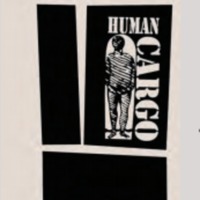
Human Cargo: The Transatlantic Slave Trade, its Abolition and Contemporary Legacies in Plymouth and Devon
Human Cargo was a partnership project between Plymouth City Museum and Art Gallery, and the Royal Albert Memorial Museum, Exeter. The project consisted of two main components. The first was a historical exhibition, which explored the development of the transatlantic slave trade and, in particular, the role of Plymouth as a port, the involvement of the City's dignitaries and the South West's links with the abolition movement. The second part was a contemporary art response to modern forms of slavery and historical legacies, including the flower picking trade, sweatshop labour and the Fair Trade Movement. This work was newly commissioned and included audio visual pieces, installations, hand-printed wallpaper and participatory objects. A variety of events and activities took place alongside the exhibition including education workshops, performances, African music and storytelling activities, and Elizabethan House re-enactment sessions.
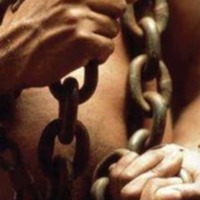
Bromley's Hidden History
‘Bromley’s Hidden History’ was led by Bromley Museum, with assistance from Bromley Local Studies and Archives. A touring exhibition, education pack, programme of events and web resources were produced to highlight Bromley’s connections with slavery and abolition. Bromley slave owners and those with capital invested in the Caribbean were highlighted, alongside the influence of William Pitt (who lived at Holwood House) and his political circle in the abolitionist campaign. Consideration was also given to historical black figures living in the borough, such as the actor Ira Aldridge.
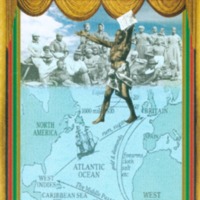
Leeds Bicentenary Transformation Project
This collaborative community initiative celebrated African and Caribbean culture in Leeds, with a focus on commemorating the Abolition Act by 'highlighting African achievement, liberation and aspirations'. New exhibitions, publications and resources were produced and over 100 bicentenary events organised under different themes: Education and Museums; Arts and Carnival Culture; Churches and Abolition; Legacy; Black History and Community Development; Media and Communications. Highlights included the photographic exhibition and pamphlet 'From Abolition to Commonwealth', which remembered indentured labour in Africa and the Caribbean after 1807, and the 40th anniversary of Leeds West Indian Carnival, with themes that highlighted heritage, liberation, respect and freedom. Project outputs included an education pack, black history classes, concerts, church services, lectures and performances.